Optimal LED Light Intensity for Growing Cannabis: A Week-by-Week Guide
Optimal LED Light Intensity. Growing cannabis indoors requires precise control over environmental conditions to ensure healthy plants and a bountiful yield. One critical factor is light intensity, particularly when using LEDs. Light intensity, measured in micromoles per square meter per second (µmol/m²/s), varies throughout the cannabis life cycle. Here, we outline the ideal light intensity for cannabis from week 1 to week 6 in the vegetative stage and from week 7 to week 16 in the flowering stage.
Understanding Light Intensity
Light intensity is a crucial aspect of indoor cannabis cultivation. Unlike traditional lighting methods, LEDs offer efficiency and versatility, allowing growers to tailor light conditions to the specific needs of cannabis plants. Measured in µmol/m²/s, light intensity quantifies the number of photons in the photosynthetically active radiation (PAR) range that hit a square meter of canopy per second. This measurement is vital because it directly influences photosynthesis, plant growth, and ultimately, the yield.
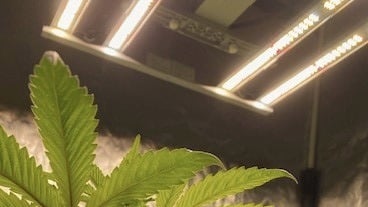
Optimal LED Light Intensity for Growing Cannabis: Vegetative Stage
(Weeks 1 to 6)
Week 1-2: Seedling Stage
- Light Intensity: 200-400 µmol/m²/s
- Description: During the initial stages of growth, cannabis seedlings require lower light intensity. High light levels can cause stress and inhibit growth. Start with the LEDs at a higher distance from the plants to provide a gentle light environment. At this stage, the focus is on developing a strong root system and healthy early growth.
Detailed Insights:
Seedlings are delicate and can easily be damaged by excessive light. During these first two weeks, the aim is to establish strong roots and stable growth. The low light intensity supports this by minimizing the risk of photoinhibition—where light overwhelms the plant’s ability to process it, leading to damage. Positioning the LED lights higher or using a dimmable LED fixture can help achieve the desired light intensity.
Week 3-4: Early Vegetative Stage
- Light Intensity: 400-600 µmol/m²/s
- Description: As the cannabis seedlings transition into the vegetative stage, they can handle more light. Gradually increase the light intensity by lowering the LED fixture or increasing the power output. This encourages robust vegetative growth and prepares the cannabis plants for higher light levels. Healthy leaf development and stem strengthening are critical during this period.
Detailed Insights:
The early vegetative stage is marked by accelerated growth and development. The increased light intensity supports more vigorous photosynthesis, leading to faster growth rates. This period involves building a sturdy plant structure, including strong stems and an expanded leaf surface area, which will be crucial for supporting heavy buds later on. Gradual increments in light intensity help acclimate the plants, avoiding shock and promoting steady development.
Week 5-6: Late Vegetative Stage
- Light Intensity: 600-800 µmol/m²/s
- Description: In the late vegetative stage, cannabis plants thrive with higher light intensity. Strong light supports dense foliage and healthy root development. This is the preparation phase for the upcoming flowering stage, so ensuring optimal light conditions is crucial. The plants should exhibit vigorous growth, setting the stage for a successful flowering phase.
Detailed Insights:
As the vegetative stage progresses, the cannabis plants require more energy to sustain their rapid growth. The increased light intensity fosters dense foliage, which is essential for maximizing the plant’s photosynthetic capacity. This period also involves lateral growth and canopy development, setting the structural foundation for flowering. Ensuring an even distribution of light across the canopy helps in promoting uniform growth and avoiding areas of underdevelopment.

Optimal LED Light Intensity for Growing Cannabis: Flowering Stage
(Weeks 7 to 16)
Week 7-8: Transition to Flowering
- Light Intensity: 800-1200 µmol/m²/s
- Description: As cannabis plants enter the flowering stage, they require more intense light to support bud formation. Gradually increase the intensity to avoid light stress. Proper light management during this transition phase can significantly impact the quality and size of the buds. The photoperiod should also be adjusted to 12 hours of light and 12 hours of darkness to stimulate flowering.
Detailed Insights:
The transition to flowering is a critical phase where the plant shifts its energy from vegetative growth to reproductive development. Increasing light intensity to 800-1200 µmol/m²/s supports this shift, enhancing bud sites’ formation and initial growth. It’s important to monitor the plants closely for signs of light stress, such as leaf curling or bleaching, and make incremental adjustments. The change in photoperiod to a 12/12 schedule mimics natural seasonal changes, triggering the flowering process.
Week 9-12: Mid Flowering
- Light Intensity: 1200-2000 µmol/m²/s
- Description: During the peak of flowering, cannabis plants utilize the highest light levels. Providing strong light ensures optimal photosynthesis, leading to larger and more resinous buds. Keep a close eye on the plants for any signs of light burn, such as bleaching or curling of the leaves, and adjust accordingly. This period is crucial for maximizing yield and potency.
Detailed Insights:
Mid-flowering is the most demanding period in terms of light energy. The plants focus on developing dense, resinous buds, and high light intensity is crucial for maximizing photosynthesis. At 1200-2000 µmol/m²/s, the light should penetrate deeply into the canopy, ensuring that lower buds receive adequate light. Consistent monitoring is essential to prevent light burn and ensure that the plants are absorbing the light efficiently. Adjustments to light height and intensity should be made based on the plants’ responses.
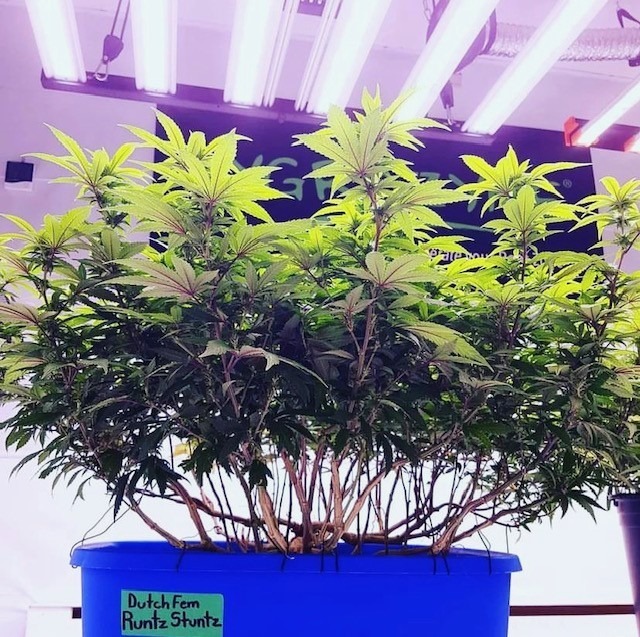
Week 13-16: Late Flowering
- Light Intensity: 2000-1000 µmol/m²/s
- Description: In the final stages of flowering, slightly reduce the light intensity from 2000 to 1000 µmol/m²/s. This mimics the natural outdoor light cycle as the season changes from summer to autumn. Reducing light intensity can help stress the plants slightly, potentially enhancing resin production and terpene profiles. This phase is about finishing strong and preparing the plants for harvest.
Detailed Insights:
The late flowering stage is about maturing buds and optimizing resin and terpene production. Reducing light intensity from 2000 to 1000 µmol/m²/s helps mimic natural seasonal light changes, signaling to the plants that it’s nearing the end of their life cycle. This slight reduction can also reduce the risk of heat stress and light burn as the plants focus on finishing strong. The decrease in light intensity should be gradual to avoid shocking the plants. Ensuring a stable environment with optimal temperature and humidity is crucial during this phase.
Key Considerations for LED Light Management
Distance from Plants
Adjusting the height of LED lights is an effective way to control light intensity. During the seedling stage, keeping lights higher helps reduce intensity, preventing stress. As the plants grow, the lights can be gradually lowered or the power output increased to match the plants’ increasing light needs. It’s important to find the right balance to avoid both light deficiency and excess.
Light Schedule
During the vegetative stage, an 18/6 light schedule (18 hours on, 6 hours off) is recommended to promote robust growth. In the flowering stage, switching to a 12/12 schedule (12 hours on, 12 hours off) is essential to trigger and maintain flowering. This mimics the natural light cycle changes in autumn, prompting the plants to flower.
Environmental Conditions
Maintaining proper environmental conditions is crucial when adjusting light intensity. Higher light intensities can increase ambient temperature, necessitating adjustments in ventilation and cooling systems to maintain an optimal growing environment. Humidity levels should also be monitored and controlled to prevent mold and mildew, especially in the flowering stage.
Plant Health Monitoring
Regular monitoring of plant health is essential to identify and address light-related stress. Signs of light stress include leaf bleaching, curling, or spotting. Prompt adjustments to light intensity and distance can help mitigate these issues. Additionally, monitoring nutrient uptake and overall plant health ensures that the plants can effectively utilize the provided light.

Advanced Tips for Optimizing Light Intensity
Light Spectrum
Different wavelengths of light affect cannabis growth in various ways. Blue light (400-500 nm) is crucial during the vegetative stage as it promotes leaf development and compact growth. Red light (620-750 nm) is more beneficial during the flowering stage, enhancing bud formation and density. Many LED grow lights are equipped with adjustable spectrums, allowing growers to fine-tune the light according to the plant’s growth stage.
Using Light Meters
Investing in a PAR meter or quantum sensor can provide accurate measurements of light intensity, ensuring that indoor cannabis plants receive the optimal µmol/m²/s. This tool can help in fine-tuning light placement and intensity, avoiding guesswork and enhancing overall efficiency.
Importance of Light Meters
Light meters, such as PAR meters or quantum sensors, are indispensable tools for serious cannabis cultivators. These devices measure the photosynthetically active radiation (PAR) that plants use for photosynthesis. Unlike standard light meters that measure lumens (a unit of visible light for humans), PAR meters specifically measure light in the 400-700 nm range, which is most relevant to plant growth.
Benefits of Using Light Meters
- Precision in Light Management: By using a PAR meter, growers can obtain precise measurements of light intensity at different points in the grow space. This precision allows for more accurate adjustments to light placement and intensity, ensuring that all plants receive the appropriate amount of light.
- Optimizing Plant Growth: Accurate light measurements help in delivering the optimal µmol/m²/s for each growth stage of the cannabis plants. Proper light intensity directly influences photosynthesis rates, impacting plant health, growth speed, and overall yield.
- Avoiding Light Stress: Excessive light can cause light stress, leading to issues like bleaching, burning, and reduced growth. Conversely, insufficient light can lead to stunted growth and poor yield. A light meter helps maintain the balance, avoiding both extremes.
- Efficiency in Light Usage: Using a light meter ensures that the grow lights are utilized efficiently. This means plants receive the necessary light without wasting energy, leading to cost savings on electricity and extending the lifespan of LED fixtures.
How to Use a Light Meter
- Calibrate the Meter: Before taking measurements, ensure that the light meter is properly calibrated according to the manufacturer’s instructions. Calibration ensures accuracy and reliability of the readings.
- Measure at Canopy Level: Hold the light meter at the canopy level of the plants. This is where the measurement is most relevant, as it reflects the light intensity that the plant leaves are receiving.
- Check Multiple Points: Measure light intensity at multiple points across the grow space. This helps identify any areas with insufficient or excessive light, allowing for adjustments to ensure uniform light distribution.
- Adjust Light Fixtures: Based on the readings, adjust the height and angle of the LED fixtures to achieve the desired light intensity. For example, if certain areas are receiving less light, lower the fixtures or add supplemental lighting.
- Regular Monitoring: Regularly check light intensity throughout the growth cycle, especially when changing stages (e.g., from vegetative to flowering). This ensures that the plants continuously receive optimal light as they grow and their needs evolve.
Advanced Tips for Using Light Meters
- Monitor Light Degradation: Over time, LED lights can degrade and lose intensity. Regular measurements with a light meter can help track this degradation, allowing for timely replacements or adjustments to maintain optimal light levels.
- Optimize Light Spectrum: Some advanced light meters also measure the light spectrum. Ensuring the right balance of blue and red light can further optimize plant growth, especially when transitioning between vegetative and flowering stages.
- Data Logging: Use light meters that offer data logging capabilities. Recording light intensity over time can help identify patterns and make informed decisions on light management.
- Integration with Control Systems: Some modern grow lights integrate with environmental control systems, allowing for automated adjustments based on real-time light meter readings. This setup can significantly enhance precision and reduce manual intervention.
Using a PAR meter or quantum sensor is a game-changer for indoor cannabis cultivation. By providing accurate measurements of light intensity, these tools enable growers to fine-tune light placement and intensity, ensuring optimal conditions for plant growth. This precision not only improves plant health and yield but also enhances overall efficiency and cost-effectiveness of the grow operation.
Light Uniformity
Ensuring uniform light distribution across the canopy is critical for even growth and development. Reflective materials on the walls of the grow space, such as Mylar or white paint, can help distribute light more evenly. Additionally, using multiple light sources can reduce shadowing and ensure that all parts of the plant receive adequate light.

Supplemental Lighting
In some setups, especially larger grow spaces, supplemental lighting may be necessary to ensure all plants receive adequate light. Side lighting or strategically placed additional LEDs can help achieve this. Ensuring that the entire plant, including lower buds, receives sufficient light can significantly impact yield and quality.
Automation and Control
Modern LED grow lights often come with automation and control features, allowing growers to program light schedules, adjust intensity, and monitor environmental conditions remotely. Utilizing these features can enhance precision and reduce the workload, ensuring consistent and optimal growing conditions.
Conclusion Optimal LED Light Intensity for Growing Cannabis:
Growing cannabis indoors with LEDs requires a strategic approach to light intensity management. By understanding the specific light needs at each stage of the cannabis life cycle, you can achieve optimal results with LEDs.



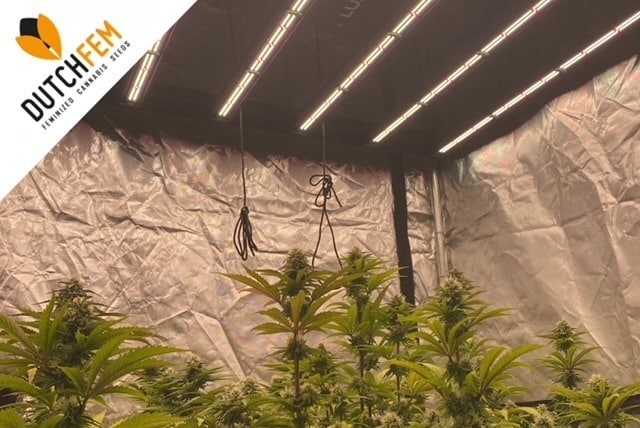







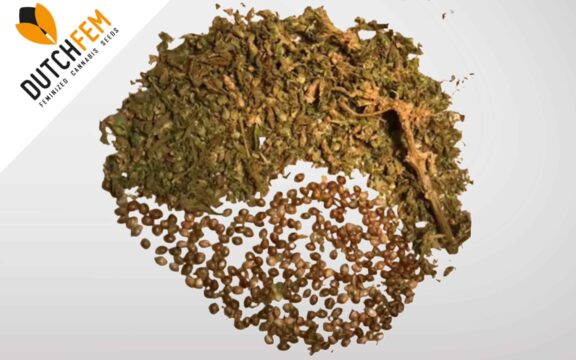








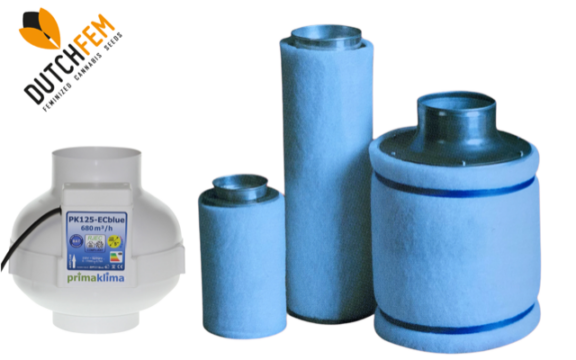





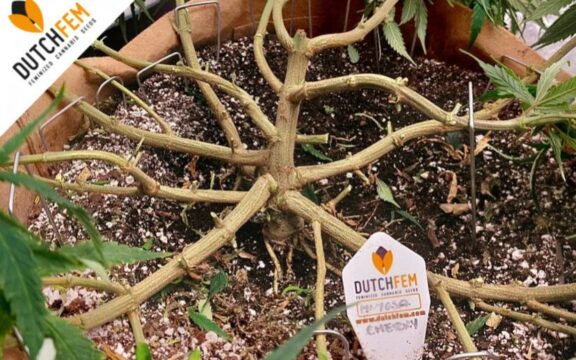




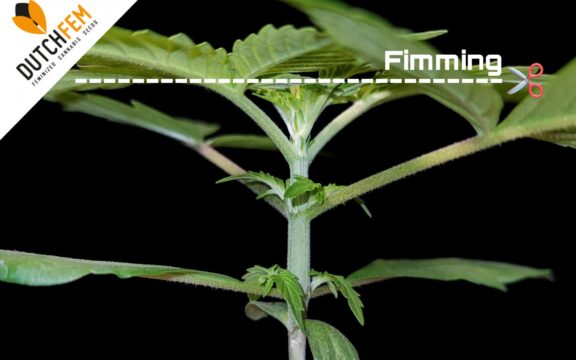

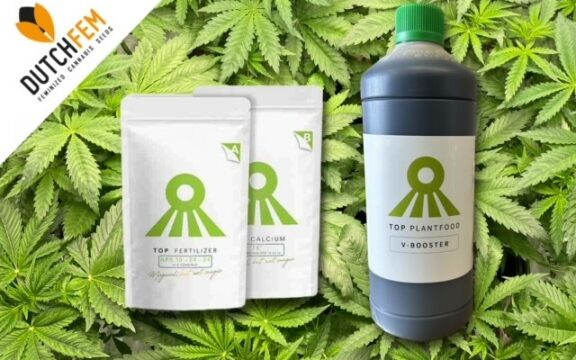

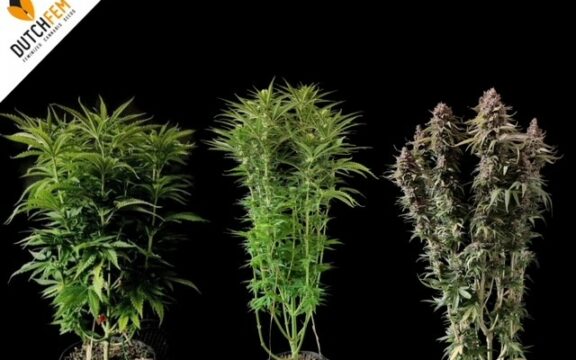




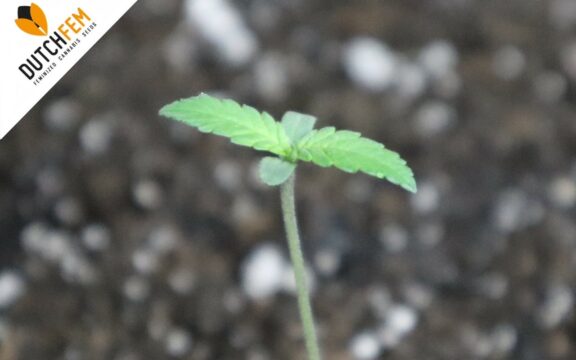

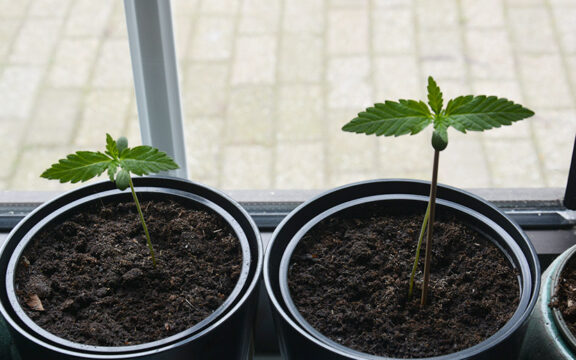
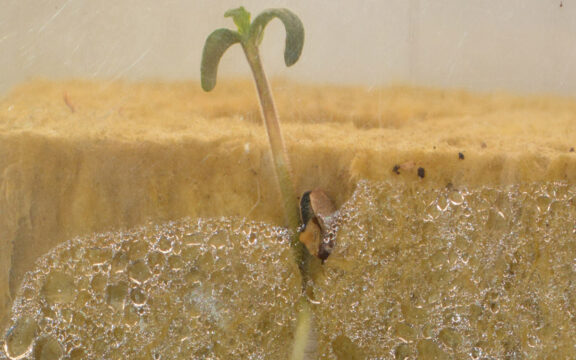




You must be logged in to post a comment.